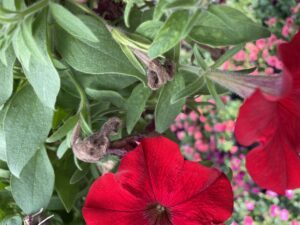Fungicide Resistance in Botrytis: A Reminder for Floriculture Crop Producers
go.ncsu.edu/readext?990372
en Español / em Português
El inglés es el idioma de control de esta página. En la medida en que haya algún conflicto entre la traducción al inglés y la traducción, el inglés prevalece.
Al hacer clic en el enlace de traducción se activa un servicio de traducción gratuito para convertir la página al español. Al igual que con cualquier traducción por Internet, la conversión no es sensible al contexto y puede que no traduzca el texto en su significado original. NC State Extension no garantiza la exactitud del texto traducido. Por favor, tenga en cuenta que algunas aplicaciones y/o servicios pueden no funcionar como se espera cuando se traducen.
Português
Inglês é o idioma de controle desta página. Na medida que haja algum conflito entre o texto original em Inglês e a tradução, o Inglês prevalece.
Ao clicar no link de tradução, um serviço gratuito de tradução será ativado para converter a página para o Português. Como em qualquer tradução pela internet, a conversão não é sensivel ao contexto e pode não ocorrer a tradução para o significado orginal. O serviço de Extensão da Carolina do Norte (NC State Extension) não garante a exatidão do texto traduzido. Por favor, observe que algumas funções ou serviços podem não funcionar como esperado após a tradução.
English
English is the controlling language of this page. To the extent there is any conflict between the English text and the translation, English controls.
Clicking on the translation link activates a free translation service to convert the page to Spanish. As with any Internet translation, the conversion is not context-sensitive and may not translate the text to its original meaning. NC State Extension does not guarantee the accuracy of the translated text. Please note that some applications and/or services may not function as expected when translated.
Collapse ▲Botrytis blight (caused by Botrytis cinerea) is a well-known problem among greenhouse ornamental crop producers. This ubiquitous fungus has a wide host range, and no host resistance is available. Thus, an integrated pest management approach is required to manage this disease successfully:
- Avoiding high humidity during cool temperatures
- Maintaining air flow through plant spacing and the use of fans
- Sanitation (removing dead plant material promptly)
- Preventative fungicide program
The preventative fungicide program is key, but increasingly challenging due to fungicide resistance in the pathogen as highlighted in a recent study from Michigan (MI). The authors, Lukasko and Hausbeck, tested almost 400 isolates of Botrytis from Michigan greenhouses for sensitivity to 8 fungicide active ingredients. They found that:
- most isolates (64%) were resistant to at least 4 FRAC groups
- many isolates (>25%) were resistant to 6 FRAC groups
- 94% of strains were resistant to thiophanate-methyl (FRAC 1)
- 80% of strains were resistant to pyraclostrobin (FRAC 11)
- 67% were resistant to boscalid (FRAC 7)
- 65% were resistant to iprodione (FRAC 2)
- resistance was less frequent for:
- cyprodinil (FRAC 9),
- fenhexamid (FRAC 17),
- fludioxinil (FRAC 12),
- fluopyram (FRAC 7)
Growers are encouraged to: 1) use cultural practices listed above to minimize Botrytis sporulation and spread: 2) consider avoiding fungicides to which Botrytis strains are most resistant; 3) consider rotating fungicides to which Botrytis strains are LEAST resistant; and 4) tank-mix with a broad-spectrum fungicide.
Although the study was conducted in MI, there is no reason to doubt that a similar trend would be seen in North Carolina greenhouses given that our crop production is similar and plants are bought and sold (and their pathogens) nationally and internationally.
Citation for full paper: Lukasko, N. T. and Hausbeck, M. K. 2024. Resistance to seven site-specific fungicides in Botrytis cinerea from greenhouse-grown ornamentals. Plant Disease 108:278-285. https://doi.org/10.1094/PDIS-06-23-1213-SR



